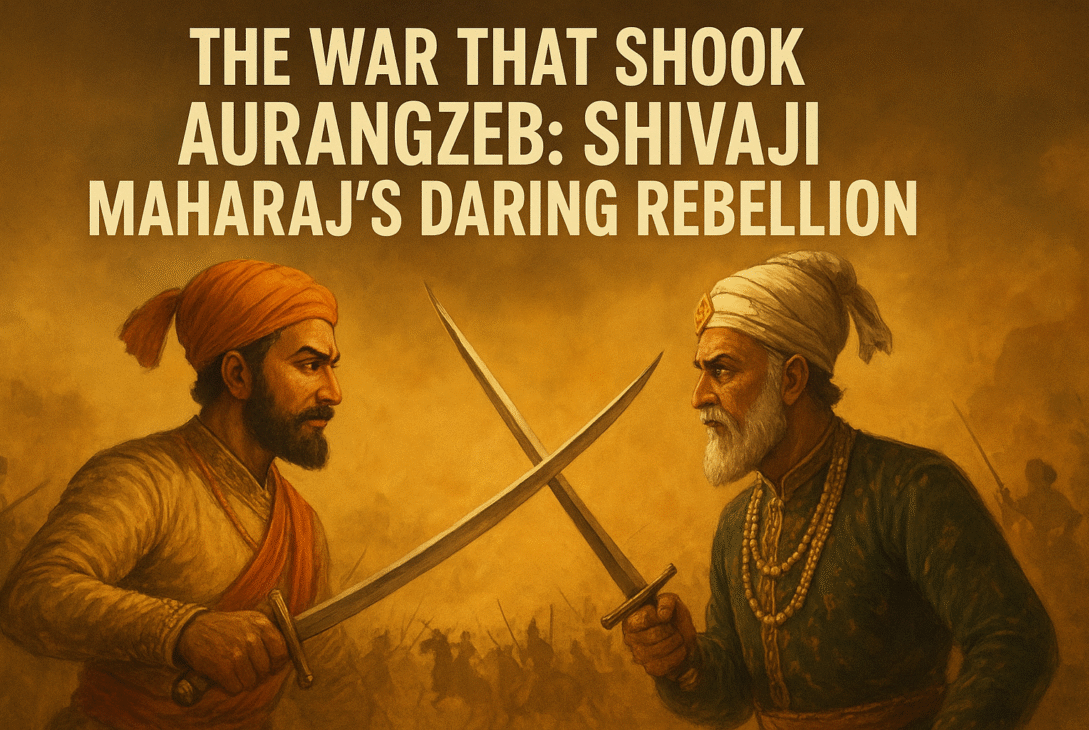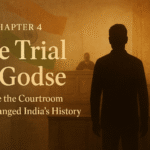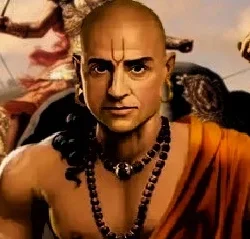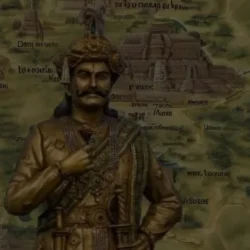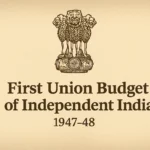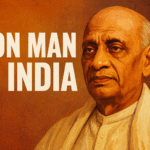Introduction
The conflict between Chhatrapati Shivaji Maharaj and the Mughal Empire stands as one of the most defining chapters in Indian history. It was not merely a battle for power, but a clash of ideologies — between an emerging native sovereignty rooted in dharma and the vast imperial machinery of Aurangzeb’s Mughal court.
From the siege of Pune to the daring escape from Agra, Shivaji’s encounters with Mughal generals such as Shaista Khan, Mirza Raja Jai Singh, and Diler Khan reshaped the course of 17th-century India. This article traces those turbulent years when the Deccan became the stage for the rise of the Maratha power and the decline of Mughal dominance.
Early Conflicts with the Mughals
After establishing control over western Maharashtra, Shivaji’s rapid territorial expansion alarmed the Mughal viceroys in the Deccan. By the mid-1660s, he had already captured important forts such as Torna, Purandar, and Kondhana, challenging imperial authority.
To contain his growing influence, Aurangzeb appointed Shaista Khan as the governor of the Deccan. Shaista Khan set up his headquarters in Pune — the very heart of Shivaji’s homeland — turning the city into a Mughal garrison. His occupation of Lal Mahal, Shivaji’s family residence, was both strategic and symbolic.
The Night Attack on Shaista Khan (1663)
Shivaji’s response to this humiliation was both audacious and masterful. On a dark April night in 1663, he and a handful of trusted soldiers infiltrated Pune disguised as a wedding party. Passing through multiple Mughal checkpoints, they reached Lal Mahal undetected.
Inside the palace, chaos erupted. In the brief but ferocious encounter that followed, Shivaji personally struck Shaista Khan, severing three of his fingers before disappearing into the night. The Mughals were stunned — Shaista Khan barely escaped alive, and over 40 of his guards were slain.
This daring attack humiliated the Mughal Empire and forced Shaista Khan to flee Pune for good. It elevated Shivaji’s status as a fearless strategist and instilled dread in the Mughal ranks across the Deccan.
The Surat Raid (1664)
To avenge Mughal aggression and replenish his treasury, Shivaji launched a lightning raid on Surat, one of the wealthiest trading cities under Mughal control. His forces captured vast wealth — gold, silver, silk, and horses — while sparing the common citizens and religious institutions.
This act was both a blow to Mughal prestige and a strategic message: the Marathas could strike anywhere, at any time. Surat’s plunder established Shivaji as a force the empire could no longer ignore.
The Mughal Counter-offensive and the Siege of Purandar (1665)
Alarmed by these defeats, Aurangzeb dispatched his most capable general, Mirza Raja Jai Singh of Amber, accompanied by Diler Khan, to subdue Shivaji. Jai Singh adopted a cautious yet calculated campaign — isolating Maratha forts one by one, rather than launching open battles.
After intense fighting and heavy losses, Shivaji agreed to negotiate. The Treaty of Purandar (1665) was signed, under which Shivaji surrendered 23 forts and agreed to serve Aurangzeb as a vassal in exchange for retaining a few strongholds and the jagir of Pune.
Though viewed by some as a setback, this was a temporary and tactical retreat. Shivaji used it to assess the Mughal war machinery from within.
Shivaji’s Visit to Agra and Imprisonment (1666)
In accordance with the treaty, Shivaji agreed to visit Aurangzeb’s court at Agra to formalize relations. He was received with great ceremony, but the meeting turned sour when Aurangzeb placed him in a humiliating position among minor nobles.
Feeling insulted, Shivaji protested and was immediately placed under house arrest with his son Sambhaji. Guards surrounded their quarters, and escape seemed impossible. Yet Shivaji’s ingenuity once again turned despair into triumph.
The Great Escape from Agra
Feigning illness, Shivaji began sending daily baskets of sweets and fruits to temples and Brahmins as religious offerings. Over time, the guards grew accustomed to this routine. One day, he and Sambhaji hid inside two large baskets, while loyal followers carried them past the unsuspecting guards.
By the time Aurangzeb realized what had happened, Shivaji was already on his way back to Maharashtra. This daring escape from Agra became legendary — a tale of wit, courage, and divine determination that inspired generations of freedom fighters.
Renewed War with the Mughals
Upon his return, Shivaji reorganized his army and administration. His navy, the first of its kind in India, began guarding the Konkan coast against both Mughal and Portuguese threats.
When the Mughals resumed hostilities, Shivaji struck back with greater precision. He reclaimed most of the forts he had lost, rebuilt his power base, and in 1674, was crowned as Chhatrapati at Raigad — officially establishing the Maratha Empire.
Aurangzeb’s Frustration and the Decline of Mughal Power
Aurangzeb’s repeated failures to subdue Shivaji drained the empire’s resources and morale. The long Deccan campaigns weakened Mughal authority, setting the stage for the eventual decline of their empire.
Even after Shivaji died in 1680, his successors continued his legacy, transforming a regional revolt into a pan-Indian resistance. Aurangzeb, who once ruled from Kabul to Bengal, spent his final years in Deccan — exhausted, disillusioned, and defeated by the indomitable spirit of the Marathas.
Conclusion: The Legacy of Shivaji Maharaj
The war between Shivaji Maharaj and the Mughals was not merely a military conflict — it was a struggle between two worldviews. While the Mughal Empire represented imperial centralization, Shivaji’s vision symbolized regional assertion, cultural pride, and political autonomy.
His guerrilla tactics, naval innovation, and administrative genius laid the foundations for a self-reliant, resilient India. The story of his defiance against Aurangzeb continues to inspire millions, reminding us that courage, strategy, and conviction can triumph even against the mightiest of empires.
